India: Singers and the Royalty Debate

‘Royalty’ is one of the most debatable topics in the world of music. Royalty is the ‘payment to an owner for the use of property, especially patents, copyrighted works, franchises or natural resources. [1] ’ Whenever any Bollywood song becomes popular, it is known popularly in the name of its Singers/Singer. But whenever it comes about paying royalty the song suddenly becomes the intellectual property of its composer. The question remains is this fair? However, as they say change is the law of nature, things are changing for singers as well. Recently, around 700 singers have got their rightfully earned royalty.
In the words of Aditi Singh Sharma, the Indian singer famous for songs like ‘Sooraj Dooba Hai’, ‘Oye Oye’ etc., ‘If I’m not entitled to a song I’ve sung, what am I left with? Similarly, a hit track is called a Ranbir-Deepika song. No one calls it the Vishal Dadlani-Shalmali Kholgade song. As long as the issue of royalty remains unresolved, singers will continue to be ignored’. [2]
The feud started after some renowned singers were giving legal notices by music directors for performing the compositions without their permission and without paying any royalty to them. However, after a five year long battle, Indian Singers’ Rights Association (ISRA) collected an amount of approximately INR 52 lakh and distributed it amongst 730 Singers including popular playback singers like KS Chitra, P Susheela, KJ Yesudas, SP Balasubrahmanyam, Srinivas etc. ISRA CEO, Sanjay Tandon told The Hindu, “This ₹51-lakh royalty money will grow 10-fold if and when radio channels, television channels and mobile companies start paying us. Right now, only IPL teams, amusement parks and few other establishments have paid the royalty money. [3] ” With only 25 per cent of royalties collected for now, ISRA believes next year, the amount might be more than INR 1.2 crore.
___________________________
[1] As defined by
Investopedia
[2] Her words quoted in a report by newspaper daily
Times of India
[3] Available
here
KitKat Might Loose Protection for Its Four-Fingered Shape
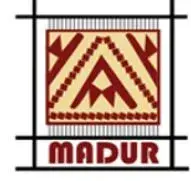
Source:www.europa.eu
“Have a break…Have a Kit Kat!” is one of the most loved tagline by individuals of every age group. The news of Toblerone changing its shape came as a surprise for chocolate lovers and the global chocolate industry. Recently, another shocking news that is getting limelight is that KITKAT four-fingered shape might not get the trademark protection in the European Union.
The senior adviser to the European Court of Justice held the four-fingered shape of the chocolate was not recognizable enough by the customers. It does not have the distinctive quality necessary for trademark protection. The story began in 2006,
when a trademark protection was granted by the European Union Intellectual Property Office for the “three-dimensional shape” of the four-fingered KitKat to Nestlé. This registration was later challenged by Cadbury, which was rejected by the European Union Intellectual Property Office reasoning that the shape of the chocolate was not ‘distinctive’ enough. The first blow for Nestle came in 2016 when the General Court while deciding the appeal in the same case, cancelled the registration of Nestle. The decision was later appealed to the European Court of Justice (ECJ) by both Nestlé and the EU agency. However, recently the Advocate General Melchior Wathelet in an opinion handed down to the ECJ has favored Cadbury and recommended that ECJ judges should dismiss the appeals and uphold the decision to annul the trademark.[4] Mr Wathelet argued Nestle doesn’t have “sufficient” evidence to show its trademark had acquired distinctive character and the lower General Court’s findings to be “manifestly inadmissible” because Mondelez’s (the company which now owns Cadbury) overall complaint against the Nestle trademark had been successful. [5]
The ECJ is not bound by the opinion of the Advocate General. Though it will be interesting to see the final turn that this decade long battle between Nestle and Cadbury would take.
______________________
[4]https://www.express.co.uk/news/uk/948409/KitKat-Nestle-Cadbury-European-
Union-Court-of-Justice-trademark-appeal
[5]https://www.express.co.uk/news/uk/948409/KitKat-Nestle-Cadbury-European-
Union-Court-of-Justice-trademark-appeal
India: Artificial Intelligence – A way to Superintelligence
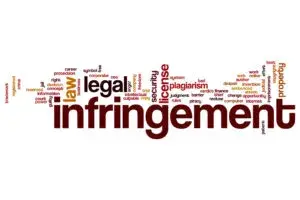
Industrialization and Digitization has changed the way humans look at life. The world is moving at a technological pace wherein with every passing minute an invention is done, and a lot of these inventions are beyond human imagination. One such technology is Artificial Intelligence or AI as it is popularly known. AI has brought extensive changes around the world. AI is a term for simulated intelligence in machines. [6]
According to the father of Artificial Intelligence, John McCarthy, it is ‘The science and engineering of making intelligent machines, especially intelligent computer programs’[7] . In simple words, it is anything that can learn and perform functions on its own without any intervention by humans. AI is the ability of simulated machines to mimic human thoughts like problem solving and learning. These machines also understand human languages, speech and are skilled in strategic thinking.
Artificial Intelligence is a part of our daily lives. Siri, Alexa, Google Maps, Uber, Turnitin and other machine learning applications are all products of AI. AI is touted as the future of mankind. AI has already started making its mark in plethora of fields and industries like healthcare, education, transportation, agriculture and many more.
To embrace this new wave called AI, India has made a modest beginning this year by devoting a huge amount of money. In his Budget Presentation on February 1, finance minister Arun Jaitley announced a national programme on AI to be spearheaded by Niti Aayog.[8] Approximately USD 480 million dollars have been dedicated to artificial intelligence, machine learning and IoT this year.[9]
Many industries and institutions are taking a leap in the field of AI. One of the most robust inventions are coming in the field of health care, which is utilizing AI in collecting, storing, normalizing, and tracing data. From smartphone and health tracker revolutions, it has become possible for a user to analyze all relevant data or simply to be up-to-date about his/her health.
Currently, a low cost portable home-based rehabilitation solution device is produced which helps patient exercise for flexion and extension of wrist and fingers. The device has been tested on 20 stroke patients in All India Institute of Medical Sciences (AIIMS), Delhi and can also be combined with the brain stimulation device.
Moreover, institutions like Indian Institute of Technology (IIT), Delhi have developed many innovations based on AI ranging from an “intelligent” prosthetic limb and a non-hazardous, long-lasting “flow battery” to a new type of loom and technology to convert agriculture waste into pulp that saves 40% water and energy than usual. Further, Centre for Biomedical Engineering has developed a new Intelligent Artificial Leg for people who have lost their legs above the knee. These artificial devices are cheap and durable and uses smart sensing technology in the shoes to adapt to the movement of the individual.
As they say every coin has two sides. With AI benefits comes certain challenges that can be a major threat to the mankind. For example, the security of the large amounts of data that AI would store. Another major issue that stands is the privacy of the personal data that AI would gather.
No doubt that artificial intelligence has unimaginable potential. The next few decades would definitely mark a shift from machine intelligence to artificial superintelligence and set forth a new era in which a computer’s cognitive ability will be superior to human’s. Nevertheless, along with the new AI inventions, we as a country also need to invest in strong step to fight the challenges that this necessary devil would bring along it.
_________________________
[6]https://www.investopedia.com/terms/a/artificial-intelligence-ai.asp
[7]
https://www.tutorialspoint.com/artificial_intelligence/artificial_intelligence_
overview.htm
[8]Economic Times report available here
[9]
https://analyticsindiamag.com/where-artificial-intelligence-research-
in-india-is-heading/
India: Delhi High Court on Original work under Section 13 of the Copyright Act
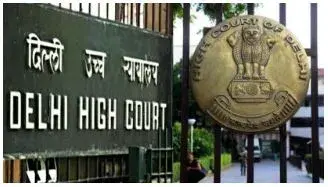
Source:www.delhihighcourt.nic.in
Introduction
Copyright is a legal right which provides protection to the original creations of human mind and intellect. Artistic work is a form of work over which copyright is available. The word “artistic” is commonly thought of pertaining to a painting or a sculpture, however, there are various other forms which are recognized by the Copyright Act, 1957.
Section 2(c) of the copyright act defines “artistic work” as,
- a painting, a sculpture, a drawing (including a diagram, map, chart or plan), an engraving or a photograph, whether or not any such work possesses artistic quality;
- a work of architecture; and”
- any other work of artistic craftsmanship;
Therefore, to qualify as an artistic work, the work need not possess high quality of art. A work can be artistic even with de minimus artistic quality. However, the work must be an original expression of thought i.e. the work must have “originality” to qualify as an artistic work under the Copyright Act. The expression in the work should be the result of application of skill and judgement on the part of the artist creating the work, that is, the artist must have applied more than some mere mechanical exercise in order to create the work.
Recently, the Delhi High Court in the case of, Marico Ltd vs. Mrs. Jagit Kaur, has allowed the rectification application of Marico Ltd (hereinafter referred to as the “Appellant”) holding that the artistic work for the label of Mrs. Jagit Kaur (hereinafter referred to as the “Respondent”) “NIHAL UTTAM” is not an original work under section 13 of The Copyrights Act, 1957. It was held that the Respondent’s said label is a substantial reproduction and a colorable imitation of the Appellant’s “NIHAR COCONUT OIL”.
Brief Facts
- The Appellant’s trademark “NIHAR” has been registered in India since 1994 and has been in use for several years with respect of coconut oil and the label that has been used, has the primary colour scheme of green, yellow and white with the representation of two coconut trees. Over the years there were certain amends but the basic structure and the colour scheme remained the same.
- In 2008, the Appellant came across the Respondent’s copyright registration. It was alleged that the copyright as an “artistic work” was first published in 2002 whereas it was registered in the year 2003.
- It was further alleged that the Respondent’s copyright had several similarities with the Appellant’s label.
- Thus, an application had been preferred by the Appellant to the Copyright Board under Section 50 of The Copyrights Act, 1957, seeking rectification i.e. removal of the Respondent’s registration from the Register of Copyrights.
-
The rectification petition was dismissed on April 21, 2008 and the present appeal assails the said order.
The Labels of the two Marks are as follows-
(APPELLANT’S LABEL)
(RESPONDENT’S LABEL)
Issues
- Whether the Respondent’s copyright is an “original” artistic work?
- Whether the Appellant is entitled to having the Respondent’s copyright removed on the grounds of it being similar to the label?
Copyright Board’s Observations
- It was observed that the allegation of copying is in a very general form and no specifics of the attributes of copying have been explained.
- It was further observed that the words “NIHAR” & “NIHAL” owe their roots to different languages having distinct meanings. “NIHAR‟ is a word of Sanskrit origin, whereas “NIHAL‟ owes it’s origin to Persian.
- It was stated that arguments in the nature of class of goods and nature of business of the Petitioner and Respondent being similar and so there being degree of confusion and deception have a prominent role in determining a matter relating to the rights of a trade mark. In matter of copyright, lackness of the originality of the work is the touchstone.
Appellant’s Contentions
- The Appellant claimed that the comparative features of the two labels are so similar that “NIHAL UTTAM” label can safely be termed as colorful imitation or substantive reproduction.
- It was claimed that the color scheme between the two labels is the same
- It was further claimed that the manner in which the coconut tree is arranged is the same, the arrangement of two broken coconuts is similar.
- It was contended that due to the long user in the market, the Appellant’s label was quite extensively used and hence the Respondent had access to the Appellant’s label. Evidence was presented by the Appellant in the form of various documents to support the contention.
Evidence
Respondent
The proviso to Section 45 states that before an application of copyright registration in artistic work is allowed, a no objection certificate has to be obtained from the Registrar of Trademark. The same has been submitted by the Respondent.
Appellant
The following evidence has been submitted in the form of documents-
- Copies of packaging of TATA NIHAR since 1995
- Economic Times dated 27th April, 2002 about the market share of TATA NIHAR.
- Deed of assignment dated 10th September, 1997 between Ajit Upasham, and the predecessor of the Appellant assigning the copyright to the Appellant’s predecessor.
- Second deed of assignment dated 25th August, 2001 for several variations of NIHAR label.
Court’s Decision
- The Court observed that a perusal of the labels clearly shows that the Respondent’s artistic work “NIHAL UTTAM” is not an original artistic work but an imitation of the Appellant’s label. The Respondent’s label is a substantial reproduction and a colorable imitation of the Appellant’s “NIHAR COCONUT OIL”. The Appellant is thus a person aggrieved and is entitled to maintain the petition under Section 50 of the Copyright Act 1957.
- The Court in the order stated that the color scheme between the two is same, further the manner in which the coconut tree and the broken coconuts are placed is the same.
- The documents submitted by the Appellant sufficiently show that the label was available earlier in the market. The Appellant’s products were openly advertised and have substantial sale in the market. Clearly the Respondent is in a position to know about its existence and copy the same.
- It further held, that the Copyright Board was concerned with the artistic features in the label and not the trademark, hence, the rejection of the rectification application on the ground that the words are from different origin is contrary to law.
- Thus, the appeal is allowed.
Opinion
The Court, in this case, has reiterated the qualification for a work to be artistic i.e. original thought. This is one of the aspects of copyright in the absence of which the same may not be registered. The case thus provides that lack of originality is the touchstone of rectification petition. The Court held that “any entry made of a work which is not an original work would be an entry wrongly made in the Register”. This implies that similarity with an already existing trademark, provides an important basis for rectification of copyright register thereby cancelling the registration of the said artistic work.
India: Delhi High Court on the Copyright on Photographs uploaded on Facebook
Source:www.delhihighcourt.nic.in
In a recent order, in the case of Fairmount Hotels Pvt. Ltd. vs. Bhupender Singh [10]
, the Hon’ble Delhi High Court has recognized copyright on photos uploaded on Facebook. The Hon’ble Court while adjudicating the dispute over copyright on the photographs of the Plaintiff’s hotel, decided in favor of the Plaintiff as the Defendant did not raise any objection against the contended rights of the Plaintiff over the photographs.
FACTS
The conflict arose in 2015 when the Fairmount Hotels Pvt. Ltd. (hereinafter also referred as “Plaintiff”) came across a Facebook page of Mr. Bhupender Singh (hereinafter also referred as “Defendant”) which displayed the pictures of the Plaintiff. Thereafter a suit for infringement of copyright of the Plaintiff on the photographs used by the Defendant was filed before the Hon’ble Delhi High Court. The Plaintiff claimed the act of the Defendant as fraud and use of unfair means to attract the innocent people in disguise of the Plaintiff. The Defendant was an ex-employee of the Plaintiff and after serving the Plaintiff for about 4 years, opened a hotel of his own in Manali by the name of Mountain Inn, and in order to promote his hotel posted the photographs of the Plaintiffs hotel on his Facebook page.[11]
SUBMISSIONS
In the original suit filed in 2015, CS (OS) 2574 of 2015, the Plaintiff made a move for ex parte interim order and in CS(COMM) 111 of 2018, the Plaintiff sought permanent restraint on the Defendant, to use the photographs of the Plaintiff’s hotel.
The Plaintiff submitted:
- That they are a better-known hotel in Shimla and have substantial goodwill in the Shimla region.
- That they managed their business and were known in the public through their website www.fairmountindia.com, which showcased several photographs of their hotel.
- That the Plaintiff has exclusive copyright on the name as well as on the website and further submitted that the trademark registration application by the Plaintiff is pending since 2006.
- That the act of the Defendant to showcase the photographs of Plaintiff on the facebook page of Defendant, is to mislead the innocent persons to believe that the Plaintiff’s hotel is same as that of the Defendant and further argued that the Defendant intends to exploit the goodwill of the Plaintiff to promote the business of the Defendant.
In view thereof, the Plaintiff in the original suit, sought an ex parte injunction against further misuse of the Plaintiff’s copyrighted photographs on the Defendant’s facebook page. Further, the Plaintiff submitted, as evidence, photographs of the hotel and the photograph used by the defendant on his facebook page.
EVIDENCE – PHOTOGRAPHS
The Defendant submitted:
- That pursuant to the ex-parte ad interim order dated August 28, 2015, the Defendant had removed all the Plaintiff’s photographs from its Facebook page.
- An undertaking that the Plaintiff’s photographs shall not be re-posted on the Defendant’s Facebook page.
COURT OBSERVATION
For Ex-parte ad interim injunction dated August 28, 2015 by Hon’ble Justice Najmi Waziri
The Court observed that the Plaintiff was able to establish prima facie case for ex-parte ad interim injunction and further observed that the Plaintiff’s rights and interest would be irreparably prejudiced, if such interim order is not passed also considering that the balance of convenience also falls in favor of the Plaintiff. Therefore, the Defendant was restrained from using the Plaintiff’s photographs on his Facebook page at the interim stage.
Final Order dated April 05, 2018 by Hon’ble Justice Manmohan
On the suit for permanent injunction for restraining the Defendant from using the photograph of the Plaintiff’s hotel on his Facebook page claiming copyright on the said photographs, the Hon’ble court accepted the submissions/ undertaking by the Defendant and on a request of cost by Plaintiff and after considering the financial condition of the Defendant, directed the defendant to pay a cost of INR 50,000 to Plaintiff.
Analysis
In the original suit, the Plaintiff argued exclusive copyright over their website and contents thereto, however, the Court did not comment on the copyright-ability of a website.
The Copyright Office, as per the information available on the website and vide orders passed by Learned Registrar of Copyright, is of the opinion that a website as a whole is not subject to copyright protection, however, some component of the website which fall within the ambit of literary, artistic, sound recording and cinematograph films under the Copyright Act, 1957 are protectable under such independent categories vide separate application filed in this regards.[12] It is further noted that the website contains various non-copyrightable content particular to websites may include but are not limited to ideas or future plans of websites, functional elements of websites, unclaimable material, layout and format or ‘look and feel’ of a website or its webpage; or other common, unoriginal material such as names, icons or familiar symbols. [13]
The debated question in such a situation is “Should “look and feel” of a website be covered as copyright-able subject matter?”
The “Look and Feel” of a website is the creativity of the website holder that ensures unique components of the website so as to be attractive and user friendly. The look and feel of a website is not a fixed feature but variable as per the requirement of the website holder. This variable feature can be modified and incorporated in the website in order to be associated completely with a specific proprietor/ brand or associated with particular website.
In Internet era, a website is essential to distribute information, to attract public attention and to act as a platform between the website holder and its customer/clients. In such a situation, the ‘look and feel’ of the website makes the first impression to the customer, and therefore, the efforts taken by the website holder to create unique ‘look and feel’ is ideally creativity and therefore copyright-able subject matter. It is important to note that with time the companies are making major investments on web portal for communication with the public, and this communication includes various trademark, product information, fonts and design of contents, effects and animation using the brand/ trademark etc.
With the launch of new products / services of a company, the website is the first platform updated for public access. This motivates the company to emphasize more on the overall features of the website which may attract more attention and publicity. Even major brands are using their trademark as background image for the website, using the color combination of the trademark (if any) and/or using a specific animation/ combination of color and font etc. With the focus of companies on attracting more public attention on their website, the ‘look and feel’ is ought to gain consideration to determine association with a brand. In such circumstances, it is a fair opinion to consider ‘look and feel’ of the website as copyright-able.
As software works are protected separately under the software category, similarly a provision for protecting the look and feel of the website can be considered under a separate category for website. Considering the competition between the rival companies, the website is the most effective medium to promote the business and goodwill of a company. The Copyright Office has also considered the copyright-ability of an APP under software category subject to submission of source and object code as provided under Rule 70 (5) of the Copyright Rules 2013. It is important to note that the registration of an APP covers any screen displays generated by that program, provided that the computer program (code) generating the screen display is submitted by the applicant. Therefore, if registration of APP through it source code and object code, is eligible to protect the screen display which basically is the ‘look and feel’ of the APP, then even the programming and coding causing the ‘look and feel’ of the website must be considered as copyright-able subject matter.
__________________________
[10]CS(COMM) 111 of 2018
[11]poorva Mandhani, Delhi HC Recognizes Copyright On Photos Uploaded On Facebook, available onn
http://www.livelaw.in/delhi-hc-recognizes-copyright-photos-uploaded-facebook-read-order// (last visited April 20, 2018)..
[12]frequently Asked Questions, How can I get copyright registration for my Web-site?, available at
http://copyright.gov.in/frmFAQ.aspxx (last visited April 20, 2018)..
[13]Some of the order passed by the learned Registrar of Copyright in this regards are In the matter regarding registration of Copyright Application titled “Moviez Corner” (Dy. No. 4899/2015-CO/L);In the matter regarding registration of Copyright Application titled “Unfold Website Design” (Dy. No. 3381/2016-CO/L); In the matter regarding registration of Copyright Application titled “K Class, Class 6 – Book 3- Geography & K Class, Class 4 – Book 1- English” (Dy. No. 3949 & 3944/2016-CO/L); In the matter regarding registration of Copyright Application titled “K Class, LKG; K Class Class 1; & K Class, Class 6 – Book 5 Maths” (Dy. No. 2228, 2229 & 3943/2016-CO/L); In the matter regarding registration of Copyright Application titled “HAMSTECH ONLINE CONTENT” (Dy. No. 5738/2017-CO/L).


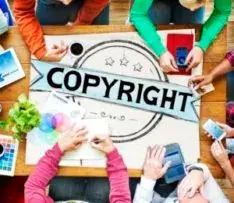
 Whenever any Bollywood song becomes popular, it is known popularly in the name of its Singers/Singer. But whenever it comes about paying royalty the song suddenly becomes the intellectual property of its composer. The question remains is this fair? However, as they say change is the law of nature, things are changing for singers as well. Recently, around 700 singers have got their rightfully earned royalty.
Whenever any Bollywood song becomes popular, it is known popularly in the name of its Singers/Singer. But whenever it comes about paying royalty the song suddenly becomes the intellectual property of its composer. The question remains is this fair? However, as they say change is the law of nature, things are changing for singers as well. Recently, around 700 singers have got their rightfully earned royalty.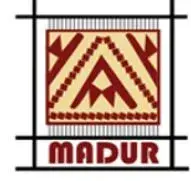 “Have a break…Have a Kit Kat!” is one of the most loved tagline by individuals of every age group. The news of Toblerone changing its shape came as a surprise for chocolate lovers and the global chocolate industry. Recently, another shocking news that is getting limelight is that KITKAT’s four-fingered shape might not get the trademark protection in the European Union.
“Have a break…Have a Kit Kat!” is one of the most loved tagline by individuals of every age group. The news of Toblerone changing its shape came as a surprise for chocolate lovers and the global chocolate industry. Recently, another shocking news that is getting limelight is that KITKAT’s four-fingered shape might not get the trademark protection in the European Union.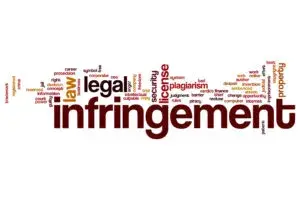 According to the father of Artificial Intelligence, John McCarthy, it is ‘The science and engineering of making intelligent machines, especially intelligent computer programs’. In simple words, it is anything that can learn and perform functions on its own without any intervention by humans. AI is the ability of simulated machines to mimic human thoughts like problem solving and learning. These machines also understand human languages, speech and are skilled in strategic thinking.
According to the father of Artificial Intelligence, John McCarthy, it is ‘The science and engineering of making intelligent machines, especially intelligent computer programs’. In simple words, it is anything that can learn and perform functions on its own without any intervention by humans. AI is the ability of simulated machines to mimic human thoughts like problem solving and learning. These machines also understand human languages, speech and are skilled in strategic thinking. 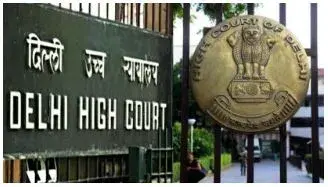 Recently, the Delhi High Court in the case of, Marico Ltd vs. Mrs. Jagit Kaur, has allowed the rectification application of Marico Ltd holding that the artistic work for the label of Mrs. Jagit Kaur “NIHAL UTTAM” is not an original work under section 13 of The Copyrights Act, 1957. It was held that Jagit Kaur’s said label is a substantial reproduction and a colorable imitation of the Marico’s “NIHAR COCONUT OIL”.
Recently, the Delhi High Court in the case of, Marico Ltd vs. Mrs. Jagit Kaur, has allowed the rectification application of Marico Ltd holding that the artistic work for the label of Mrs. Jagit Kaur “NIHAL UTTAM” is not an original work under section 13 of The Copyrights Act, 1957. It was held that Jagit Kaur’s said label is a substantial reproduction and a colorable imitation of the Marico’s “NIHAR COCONUT OIL”.